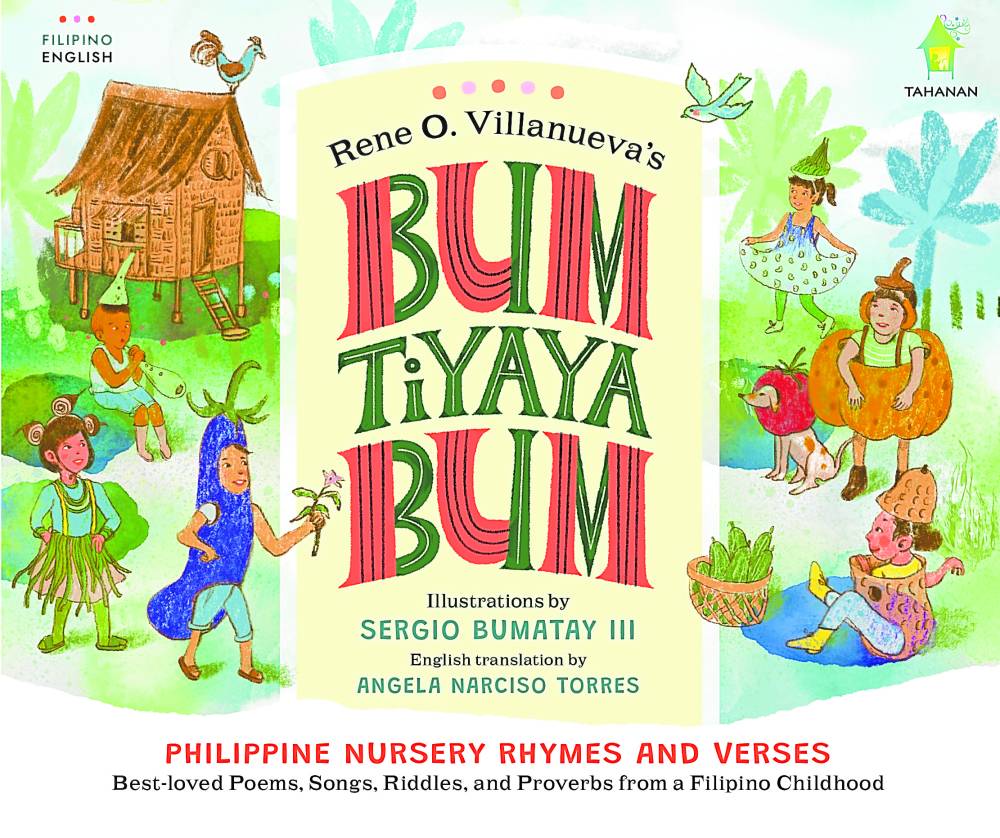
Sasara ang bulaklak/Bubuka ang bulaklak…” If you’re Pinoy and of a certain age, you know that’s how “Bum Tiyaya Bum,” a rhyming play song, begins. You held hands with playmates to form a ring around the queen (“Sasayaw ang reyna…”). But how many children know the song now? And given their much lower exposure to the Filipino language today, how many can understand it at all?
A passionate team understood the challenge and rose to it magnificently: “Bum Tiyaya Bum: Philippine Nursery Rhymes and Verses” (Ilaw ng Tahanan Publishing, Makati City, 2023, 176 pages) is a landmark collection of 88 Filipino children’s rhymes and songs, riddles and proverbs selected by the late legendary writer Rene O. Villanueva, all luminously illustrated by Sergio Bumatay III and lyrically translated into English by Angela Narciso Torres. “Enter the timeless land of a Filipino childhood” is a promise the book makes and delivers spectacularly.

“Bum Tiyaya Bum” took a full 25 years to develop, from the time Villanueva—the multiawarded writer and creative force behind seminal children’s show “Batibot”—produced the manuscript to its launch at this year’s Manila International Book Fair.
“This is the most important book we’ve ever launched,” says publisher Reni Roxas. “I shared Rene’s sentiment that while the age-old sayings of Mother Goose were read out loud to children in the West—and I daresay in the homes of Filipino families—where, we implored, were our own nursery rhymes?”
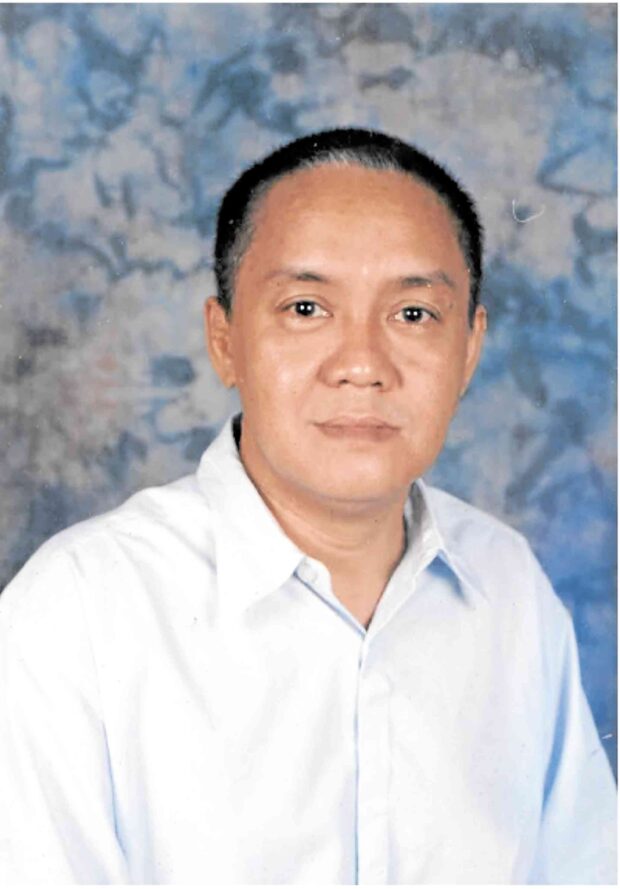
Since she asked this question in the 1990s, other publishers have launched Filipino rhyme collections and translations to educate and entertain children. But “Bum Tiyaya Bum” is so beautifully produced that it outshines all others in capturing the magic of one’s childhood and the essence of the songs that form such a huge part of it. It is, as self-proclaimed, a book for Filipinos of all ages to enjoy.
Genuinely inspired
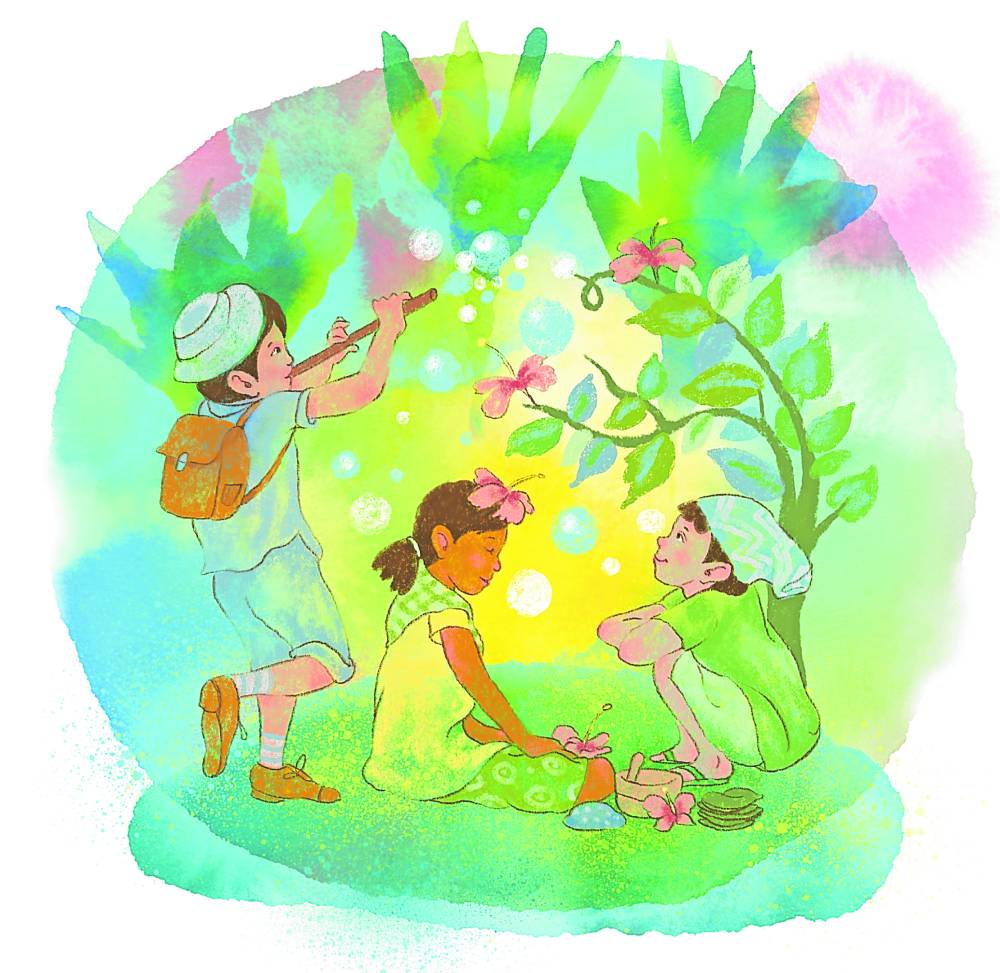
The work of book illustrator and painter Bumatay is genuinely inspired. As he notes in the book: “My childhood experiences, aspirations and craziness of being a Filipino kid (who grew up in the 1980s) bubbled to the surface, serving as models for my scenes and characters. The challenge lay in whether I could blend my own playtime experiences into a cohesive flowing visual narrative while remaining faithful to the spirit of the verses. All told, it took me seven years to complete the artwork for ‘Bum Tiyaya Bum.’ I think now it was worth it.”
This collection’s trump card, however, is Filipino American writer Torres, whose wonderful English translations capture both the essence and rhythm of the original text.
Here, for instance, is her version of the play song “Chippy Chippy Gum”: “Chippy chippy gum is a bubble gum/Masarap ito at malinamnam/Bumili kayo sa tindahan/Chippy chippy gum is a bubble gum (Chippy chippy bubble gum/Sweet and juicy—yum yum yum!/Buy a pack, gimme some/Chippy chippy bubble gum).”
Labor of love
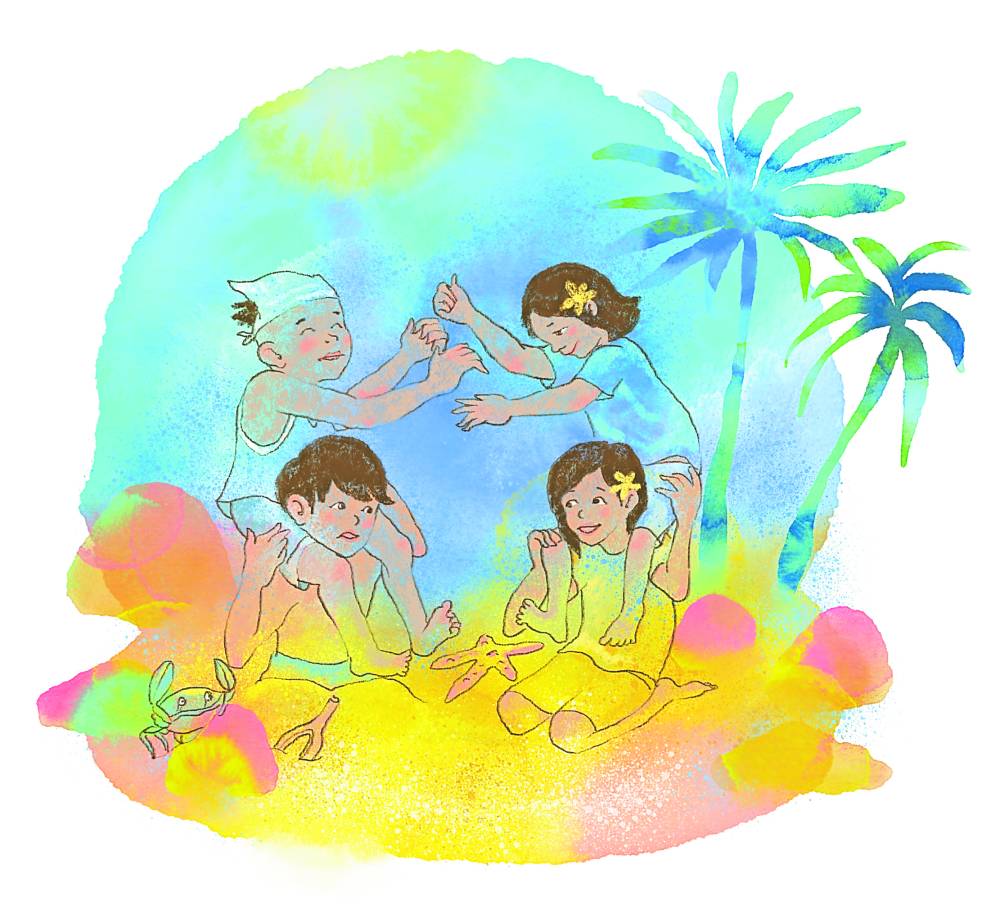
Born in New York with many childhood years spent in the Philippines, Torres was found after a long search for the right translator who could capture the spirit of the Filipino verse and evoke the same feelings in the English version.
“I wanted my translations to be as memorable, delightful, and fun to sing and recite in English as they were in Tagalog. In a word, inevitable. Children are the first to pick up on anything that is forced or unnatural,” Torres says via email. “I’m happy my translations are making it possible for these beautiful artifacts of my Filipino childhood to come alive in new and fresh ways for bilingual and English-speaking readers all over the world—and, with any luck, many for decades to come.”
Even the book design was a labor of love by long-time Tahanan collaborator Auri Asuncion Yambao, who painstakingly chose the right font combinations for the Filipino and English versions. She died in 2022, mere months before the book was finalized. Her work is so integral to the beauty of “Bum Tiyaya Bum’’ that Tahanan broke publishing protocol and listed Yambao on the title page.

The 88 selections are divided into six sections. The first has 19 traditional nursery rhymes; among them, “Bata-Batuta,” “Ako’y May Alaga” and “Gaya Gaya Puto Maya.” The next 14 entries, grouped under “Rhymes for Counting and Play,” include “Sawsaw Suka” and “Nanay, Tatay.”
The third section has nonsense rhymes, with eight entries including “Ulan, Ulan” and “Chippy Chippy Gum.” This is followed by Children’s Songs with highly familiar titles: “Leron, Leron Sinta,” “Penpen de Serapen,” “Paruparong Bukid,” “Sampung mga Daliri,” “Bahay-Kubo,” “Sitsiritsit,” “Magtanim ay Di Biro,” and “Inday sa Balitaw.”
Villanueva included a fifth section on riddles—an important segment of Filipino games—and a sixth on proverbs, which is what kids heard from parents instead of playmates. All these comprise a well-rounded (and surprisingly affordable) read-aloud book that should be part of every Filipino child’s library.
Rediscovered childhood
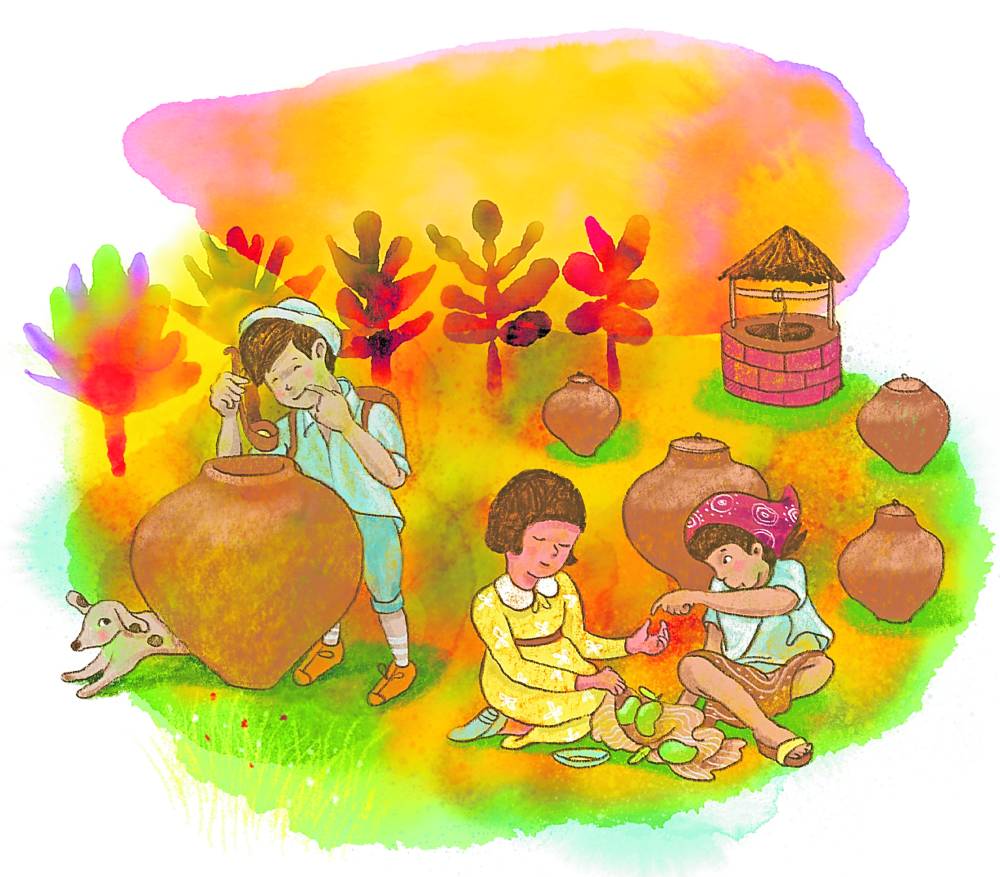
What’s equally interesting is what didn’t make it to the collection. Villanueva’s original manuscript was dated 1998; he died in 2007, just as the project was being revived. Tahanan enlisted the help of Villanueva’s former student, Dr. Eugene Evasco, and US-based musicologist Dr. Miriam Factora, to ensure the manuscript’s integrity while being mindful of current sensibilities. Some traditional rhymes seem to cast shade (“May pulis, may pulis/Sa ilalim ng tulay”) or have slightly racist undertones (“Jack en poy, hale hale hoy/Sinong matalo siyang unggoy”) that just wouldn’t sound right to modern ears.
It was at times a tough call, according to editor Frances Ong. “We kept asking ourselves, ‘What would Rene say about this wokeness? Tatarayan ba tayo ni Rene? (Would this get Rene’s hackles up?),’” Ong says, while recounting the careful review and gatekeeping each entry received. “It’s a bit embarrassing that it took so long. But if we insisted on banging it out in 2007, we wouldn’t have found Serj, we wouldn’t have had Angela. It would’ve been a different book altogether. It is what it is. We feel this book is important because it’s almost like you’re gifting your childhood to a loved one.”
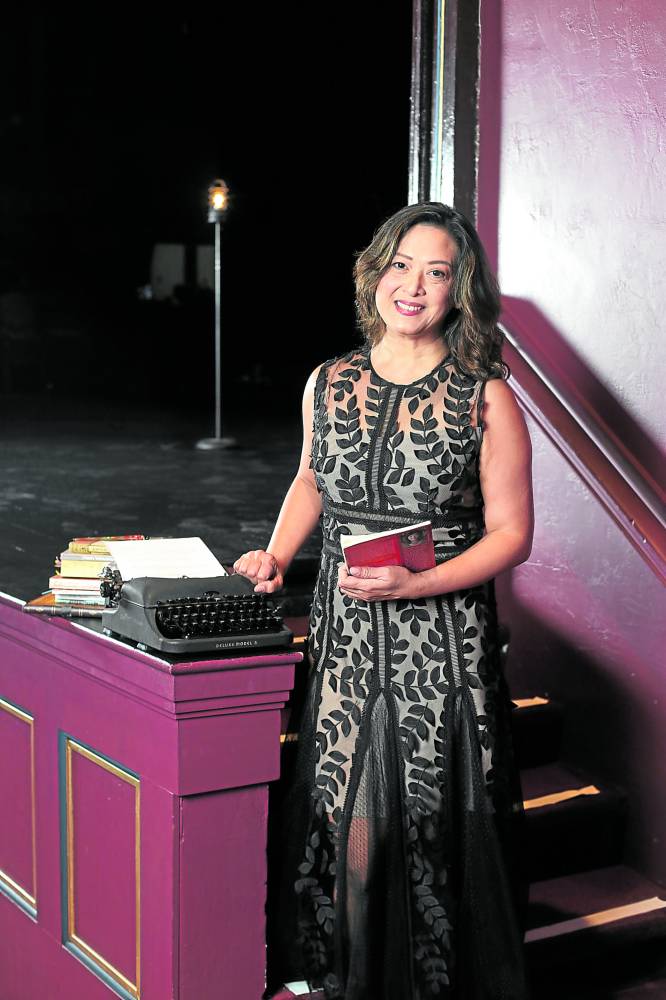
“Bum Tiyaya Bum” is the fulfillment of long-held dreams as it is the bearer of earnest hopes—which are voiced by Villanueva himself in his introduction (translated by Torres): “It is our hope that the poems, songs, riddles, proverbs and sayings in this book will encourage us to rediscover our own childhood. The world of teks, jackstone, Chinese garter, ice scramble, and sago’t gulaman. The world of pinipig, nilupak, biko, biyola-kamatis, patintero and taguan.”
That’s the truly timeless land of a Filipino childhood. —CONTRIBUTED
“Bum Tiyaya Bum” is available through Tahanan Books at https://tahananbooks.ph and in North America through tahananbooks.com.













































